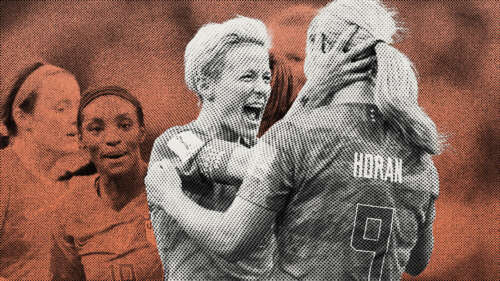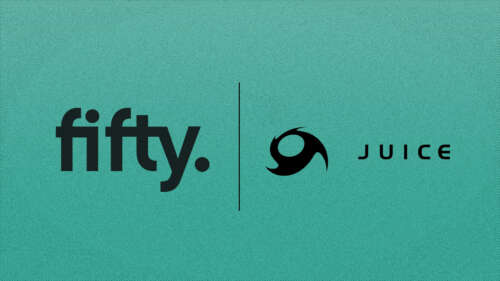When it comes to consumer segmentation, sometimes we can forget why we are all here. Of course, brands and marketers need consumer segments or personas, but at the same time segments, especially demographics can gloss over individuals’ interests and nuances. Ultimately, what we want to do is understand people. Are all fast food lovers interested in the same things? Does brand affinity tell us anything? If you are a fan of a challenger bank, what does that say about you?
It is imperative that brands understand their audiences and what makes them unique as compared to their competitors’ audience. Understanding this will create greater subtleties in what content a brand creates, where they place it and why. Using Fifty’s proprietary platform, we decided to examine two very different sectors: fast food and banking to showcase how Fifty can transform data into real-life insights, finding people amongst the segments.
Challenger Banks
Mobile-only and challenger banks have seen rapid growth in the last couple of years, thanks to an infusion of venture capital and strong word-of-mouth marketing. We decided to dig into the UK’s two largest digital-only banks: Monzo and Starling to determine whether all challenger bank fans were the same.
Similar offerings; different crowds
Both Monzo and Starling are leading the banking revolution in the UK. Monzo now has over 2 million users, adding 200,000 users each month while Starling has reached 695,000 with the goal of getting to 1 million users by the end of 2019. Both are online-only and have similar services including budget overviews, no fees on international transactions, competitive exchange rates and different mechanisms for saving money. Tom Warren of The Verge describes the difference: “Starling feels like more of a traditional grown-up bank, while Monzo comes across as more hip and community-focused.”
When we put both banks through Fifty’s platform, we found these fundamental differences are reflected in each bank’s core audiences. Monzo’s largest tribe of followers are London-based Millennials Professionals. This cohort are politically-engaged, technologically-savvy and balance their work life with the latest pop culture news and happenings with a diverse set of influencers from entertainers like Ricky Gervais and Russell Brand to political figures such as London Mayor Sadiq Khan and President Obama. In contrast, Starling’s largest tribe consists of Tech Professionals who keep up to date with business news by reading Bloomberg and Harvard Review, and engage with technology media companies like Wired and BBC Tech. They skew towards the right-side of the political spectrum with top influencers including former Conservative Prime Minister David Cameron and ITV political editor Robert Peston.
This shows that despite the fact that these two digital banks offer relatively similar services, their core following is very different. And that difference will matter for everything from the tone of voice in creative campaigns to media placements.
Communicating to the competition
Of course, there is overlap between the two banks as well. Both have large tribes that are interested in FinTech, digital and innovation, and that’s to be expected from companies challenging the status quo. But perhaps the more interesting crossover is that both Monzo and Starling end up quite high in the influencer list of their competitor’s audience. So Monzo is one of the top five influencers amongst Starling’s audience, while Starling shows up in the top 40 influencers for Monzo.
This tells us that Monzo has a higher penetration and awareness amongst Starling fans. It also means that the communication strategy of these two banks must be very carefully calibrated to ensure that not only do they have the correct messaging for their audience, but that they think about how to appeal to their competition as well. If Monzo understands it is highly influential amongst Starling fans, it can create tailored message that perhaps focuses more on the strength of its business features. If Starling sees that TechCrunch, The Economist and Mashable are all top domains of Monzo’s London Millennials tribe, it may try to activate campaign across these sites, with a tone-of-voice that would appeal to this generation.
Fast food burger rivals
Let’s take another sector, to drive down even further on how Fifty’s platform can transform audience data into nuanced, real-life insights. Both Five Guys and Shake Shack are medium-sized (when compared to McDonalds or Burger King) quick service restaurants that launched in the UK in the last six years. With a focus on the “burgers and fries” model, you might imagine there are not that many differences between fans of the two.
Burgers are a relatively non-controversial meal. If you love them, you love them. And yet, in the last 10 years in the UK there has been a veritable burger renaissance with mid-tier burger chains opening up like Byron’s, Honest Burger, Patty & Bun, and yes the American imports of Shake Shack and Five Guys. But in the audiences of the last two, we discovered something surprising: not all burger lovers are the same. While Shake Shack appears to appeal to more urban professionals, Five Guys’ audience is dominated by Deal-seeking Mums and Students.
What’s in a burger?
Through analysing the various data points that Fifty’s platform provides, we can break down the differences between each chain’s core following, to understand why Shake Shack appeals to one set and Five Guys to another.
Shack Shack’s largest tribe, London Foodies, is a group of iPhone-loving urbanites, who tend to describe themselves based on their love of food and drink, with “coffee”, “wine” and “lover” amongst popular descriptors. But they are not just foodies – many are industry-insiders themselves with “chef”, “restaurant” and “bar” also top keywords in their bios. Unsurprisingly, the London Foodies keep a keen eye on the ever-changing food scene of the city and they are serious meat-lovers with recently closed BBQ restaurant Pitt Cue Co. and high-end British steakhouse Hawksmoor amongst their top influencers.
Compare this to Five Guy’s largest tribe: Deal-seeking Mums. This tribe is aligned by their love of fashion, cooking and pop culture. Often describing themselves with words like “mum” and “family” in their bios, this group follow major grocery stores like Aldi and Waitrose, as well as pop culture influencers like Katie Price. While most people in this tribe are from London, people living in smaller cities and areas like Manchester, Essex and Birmingham all make up a sizable portion of the tribe. Popular tweets amongst this cohort include hashtags #FreebieFriday #WIN and #competition, all indicating their love of getting a good deal.
The disparity between Shake Shack’s top tribe and Five Guys top tribe is revealing for a couple of reasons. While both are American chains, Shake Shack sells itself on its New York City origins, and pitches itself as a gourmet version of a roadside burger shack. Its burgers are made from 100% antibiotic-free, all-natural Angus beef and toppings include applewood smoked bacon, chopped cherry peppers, or Muenster cheese. That messaging has resonated with an audience who might seek out gourmet over convenience. Five Guys on the other hand sells itself both its simple burger-and-fries menu, and its 15 choices of toppings, that could lead to 250,000 possible ways to order its burger. While its price point is similar to Shake Shack, its no-frills approach appeals to those looking for a deal.
What influence can reveal
Looking at both Shake Shack and Five Guys top 100 influencers across their tribes is telling as well. While Five Guys registers as the fifth most influential account for Shake Shack, Shake Shack doesn’t even register as a top account for Five Guys’ audience. This may reveal that Shack Shake’s audience is more cognizant of the overall food scene, and so have their sights on all the major burger players. Patty & Bun, Bleecker and Honest Burgers are all amongst their top 35 influencers. Meanwhile, Five Guys lovers are less focused on the ins and outs of the UK food scene – Nando’s and Starbucks are the only food and drink brands amidst their top 50 influencers, which is dominated more by British cultural icons like James Corden, Gary Linekar and Holly Willoughby.
Understanding who these audiences think of as influencers is crucial to understanding them as people. We can gauge that Five Guys attracts a more mainstream audience who have more of an affinity to pop culture than to food culture. But they may also have more brand loyalty to Five Guys, with little other burger brands overlapping as influential to them. For Shake Shack, keeping a loyal customer base could be harder for a crowd keen to try every new food trend and burger brand that may pop up onto the scene.
It might be easier to presume that all burger lovers have the same interests, and will respond to the same messaging. But imagine if Shake Shack and Five Guys both simply tried to sell their offerings based on demographics alone. Then Shake Shack might miss out on a swathe of urban professionals looking to fulfill their gourmet burger craving and Five Guys would miss out talking to busy mums looking for a quick meal out with their family. If Starling and Monzo simply targeted urban Millennials, they would both miss out on opportunities to broaden their reach.
By using Fifty’s platform we can really dig into what makes up a brand’s audience, and why it differs from the competition. While it is easy to bucket people into consumer segments, it is crucial to unpack the segments, to understand the people within the data. If you know what they love and who they consider influential, then you will be able to target them more precisely.
With Fifty, businesses can understand their audiences to a greater depth. This vital insight can transform everything, from brand tone-of-voice to the types of campaigns you choose to execute. Using Fifty, we can not only help you understand your following better but we can create efficient media campaigns, activating these real-life insights and ensuring your campaigns are seen by the right people at the right time on the right website or platform.






















